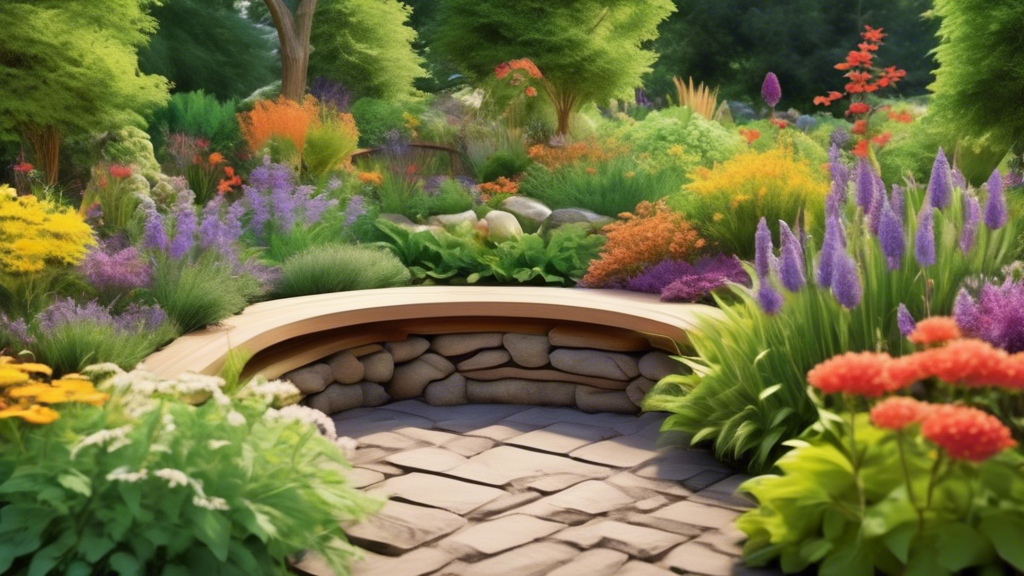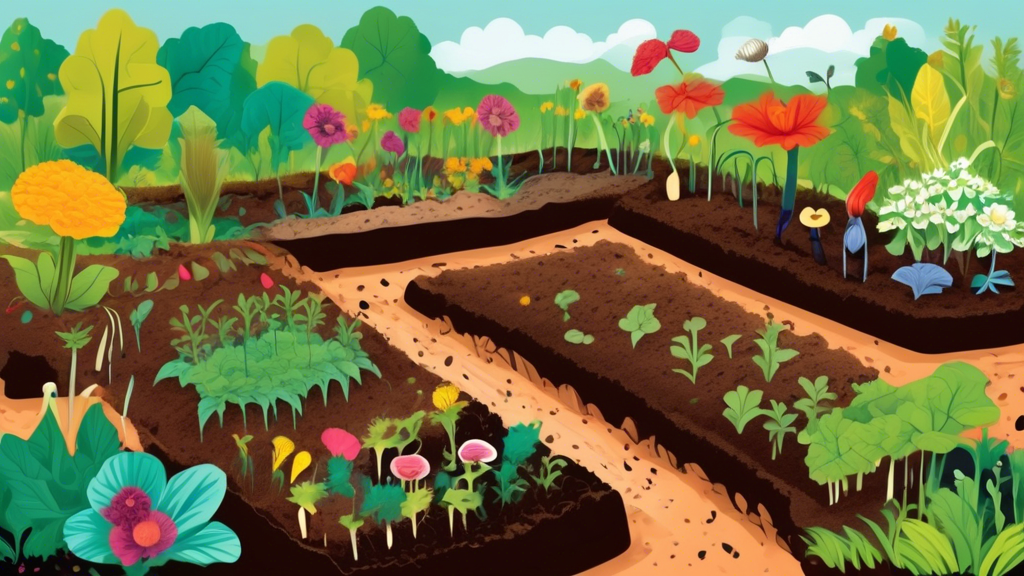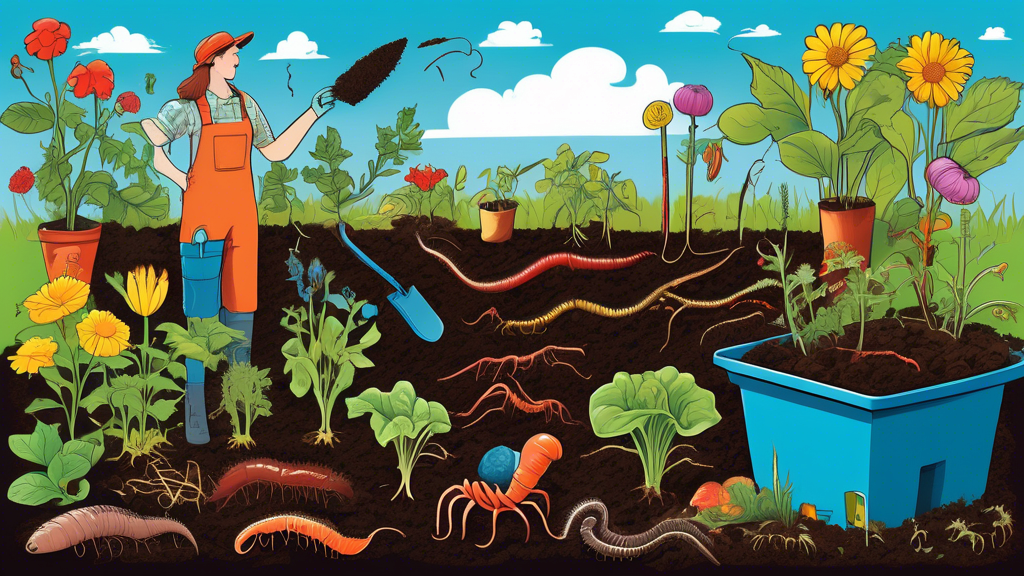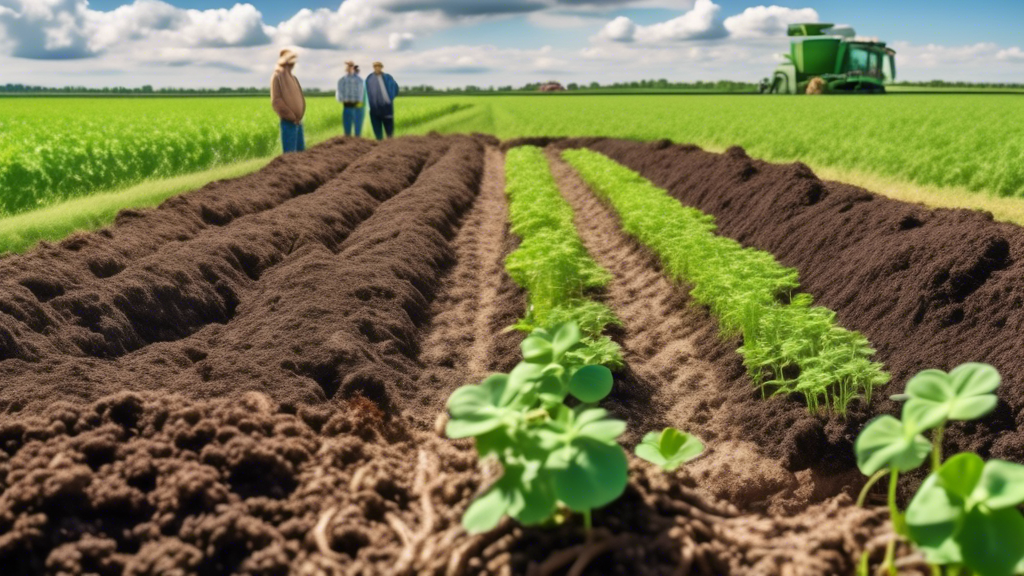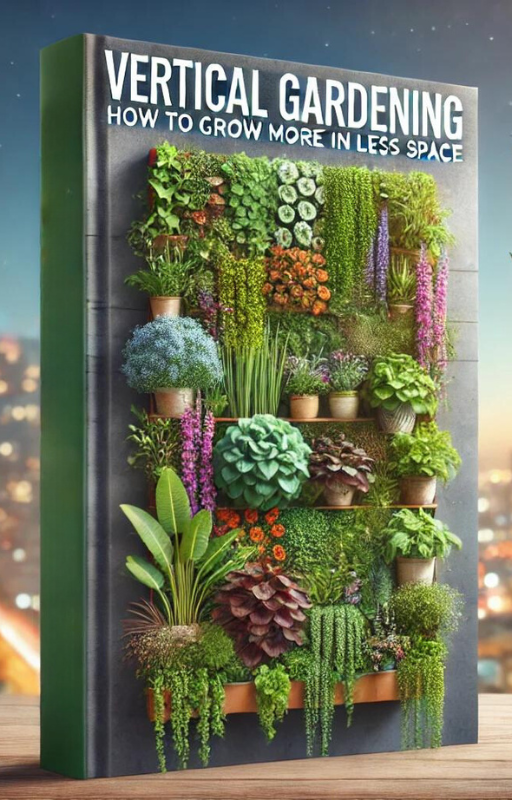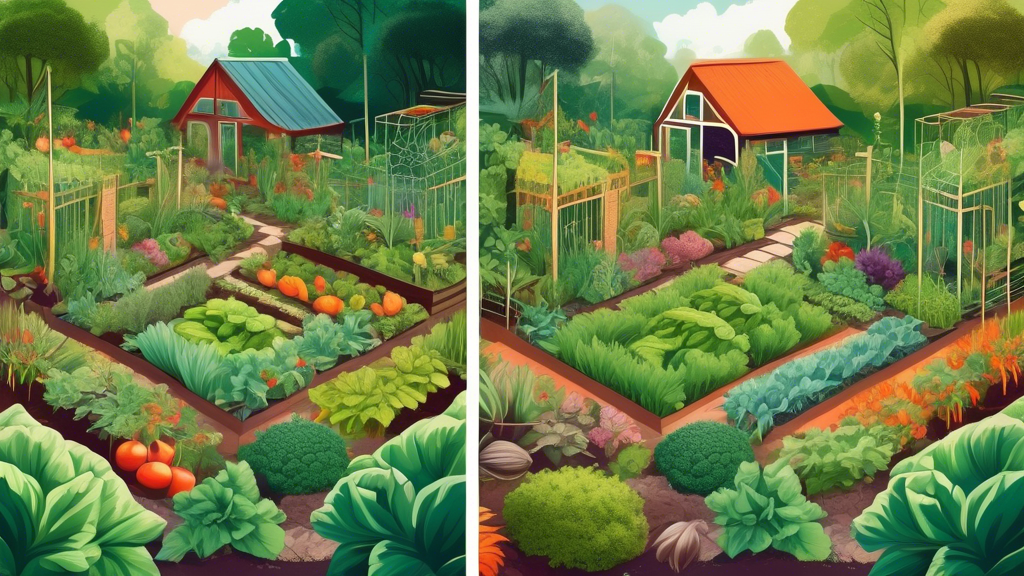
Permaculture vs. Traditional Gardening: Uncovering the Key Differences for a Sustainable Harvest
Briefly introduce the growing interest in sustainable living and food sovereignty. Pose the question: Is your garden working for you or against the natural environment? This article will break down the fundamental key differences between Permaculture and Traditional Gardening to help you decide which path is right for your land and lifestyle.
What is Traditional Gardening? The Conventional Approach
Core Philosophy: Control and Conquer
Focuses on creating a separate, controlled space for cultivated plants. The gardener is the manager who imposes order on nature. The primary goal is maximum yield of specific, desired crops in a single season.
Common Practices in a Traditional Garden
- Annual planting in straight rows or raised beds.
- Regular tilling and soil turning.
- Use of synthetic fertilizers and pesticides.
- Frequent, scheduled watering (e.g., sprinklers).
- Monocropping (growing a single crop in a large area).
Challenges of the Traditional Path
- High Input & Labor: Constant need for weeding, watering, and fertilizing.
- Soil Degradation: Tilling destroys soil structure and beneficial microorganisms.
- Chemical Dependency: Can lead to pesticide-resistant pests and polluted runoff.
- Water Intensive: Inefficient watering methods lead to waste.
- Vulnerability: Monocultures are highly susceptible to pests and diseases.
What is Permaculture? Working With Nature
Core Philosophy: Observe and Cooperate
Views the garden as an ecosystem to be integrated with, not separated from. The gardener is a facilitator and a student of natural patterns. The goal is to create a self-regulating, resilient, and productive system that benefits all life.
Foundational Principles of a Permaculture System
- Observation: Spending time to understand the land’s sun, wind, water flow, and wildlife before any design.
- Stacking Functions: Every element (a plant, a structure, an animal) should serve multiple purposes.
- Closing the Loop: Creating systems where waste from one element becomes food for another (e.g., compost).
- Use of Perennials: Prioritizing plants that come back year after year for stable root systems and less soil disturbance.
The Unique Insight: It’s a Design Science, Not Just a Gardening Style
Many people don’t realize that permaculture is a holistic design framework that can be applied to energy, housing, and community systems, not just food production. The garden is simply the most visible application of its ethics and principles.
Side-by-Side: The Key Differences Between Permaculture and Traditional Gardening
| Aspect | Traditional Gardening | Permaculture |
|---|---|---|
| Philosophy & Goal | Control nature for human yield. | Cooperate with nature for ecosystem yield. |
| Plant Selection & Layout | Primarily annuals, planted in monoculture rows. | Heavy use of perennials, planted in polycultures (beneficial guilds). |
| Soil Management | Relies on tilling and external inputs (fertilizers). | Relies on no-till methods, heavy mulching, and building soil from within. |
| Water Management | Often uses municipal water and sprinklers. | Designs to capture, store, and slowly release rainwater (swales, rain gardens). |
| Pest & Weed Management | Reacts with chemical or organic pesticides/herbicides. | Prevents issues through biodiversity and attracting beneficial insects. |
| Timeline & Yield | Quicker, high yield in the first season. | Slower to establish, but yields increase and labor decreases over time. |
Which Method is Right For You?
Choose Traditional Gardening If…
- You have a small, defined space (like a balcony or small patio).
- You want quick results and enjoy the ritual of seasonal planting.
- You have limited time for initial setup and design.
Choose Permaculture If…
- You have a larger piece of land you want to develop sustainably.
- You are a long-term planner interested in reducing your external inputs and labor over time.
- Your goal is to create a resilient, wildlife-friendly habitat, not just a vegetable patch.
The Hybrid Approach: Blending the Best of Both Worlds
It’s not all-or-nothing! You can use permaculture principles in a traditional garden (e.g., adding compost, planting pollinator flowers) or have a traditional annual bed within a larger permaculture landscape.
Frequently Asked Questions (FAQs)
Is permaculture more expensive to start than traditional gardening?
It can be, due to the initial investment in perennials, trees, and earthworks. However, its goal is to drastically reduce recurring costs for water, fertilizer, and seeds over the long term.
Can I practice permaculture in an urban setting or on a small lot?
Absolutely. The principles scale beautifully. Container gardening with companion plants, vertical growing, and keeping a small worm compost bin are all applications of permaculture in small spaces.
Does permaculture mean I can’t grow my favorite annual vegetables like tomatoes and lettuce?
Not at all! A common practice is to have an “annual zone” close to the house for these crops, managed with permaculture ethics (e.g., no-till, heavy mulch), while the broader landscape is designed with perennials.
Is traditional gardening “bad” for the environment?
Not inherently. Many organic and regenerative traditional practices are excellent. The criticism lies primarily with industrial-scale, chemical-dependent monoculture. A home gardener using compost and avoiding chemicals is already taking big steps toward sustainability.
Conclusion: Understanding the key differences between Permaculture and Traditional Gardening empowers you to make an informed choice. Whether you seek the immediate satisfaction of a tidy vegetable bed or the long-term vision of a living ecosystem, the most important step is to start growing. Your garden, and the planet, will thank you for it.

